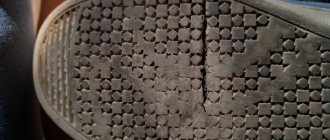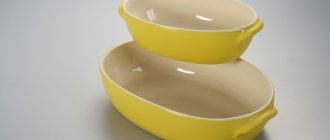Moscow, 06.26.2021, 17:13:36, editorial office of FTimes.ru, author Zoya Zharkova.
Every year, with the onset of snowfalls, dozens of people a day are admitted to hospitals with bruises and fractures received on the streets. Most of the victims became victims of their own economy and the pursuit of beauty. Proper and safe winter shoes should not only keep you warm, but also have maximum grip on the surface so as not to slip.
There is a saying: only beautiful planes fly well. The same can be said about winter shoes: those that provide stability when walking, improve foot function, and protect you from falling in icy conditions work well. It is better if winter shoes have thick soles with corrugation: this will keep you warm longer and, thanks to improved grip, will prevent you from falling into icy conditions.
Basic rules for choosing shoes in icy conditions
When choosing shoes for the winter, you should not save either time or money. If it does not meet certain requirements, serious injury may occur. It is extremely important to understand how to choose non-slip soles. You must adhere to the following recommendations:
- The material of the shoes must be resistant to frost, and a high-quality tread is required.
- You should not give preference to models with stiletto heels or high platforms.
- Contact with the road surface should be maximum.
- The heel height should be no more than 5 cm. It is extremely important that it be wide.
- The optimal thickness of the base is at least a centimeter.
The best option for winter are models with a solid flat or thick textured sole. It is also possible to choose shoes with wide but low heels. Felt boots made from natural sheep felt are especially popular - the risk of slipping in them is significantly less.
Even if you choose boots from trusted brands, they can disappoint in winter. This is due to the fact that only the sole that is made of material suitable for the cold season does not slip.
It is important to choose shoes made of frost-resistant material with deep tread soles.
The heel should be wide and the grip on the road surface should be maximum.
The optimal sole thickness is at least 1 cm
Stiletto heels are not the best option for winter shoes
Pros and cons of TPE soles, types and their characteristics
The sole is the most important element of the shoe, which protects it from premature wear and determines the service life of the pair as a whole. That is why the materials used to make this part must be highly wear-resistant. Today, rubber and caoutchouc are used in the production of shoes, but the most popular sole is TEP, which stands for thermoplastic elastomer. How this variety differs from all other analogues, whether it has weaknesses, and also what subtypes the product is divided into, it is worth understanding in advance, even at the stage of selecting a new pair of shoes, boots or shoes.
Outsole material
Winter shoe models are not made from all materials. If they are not resistant to frost, the base outside will harden and slip even more. As a rule, the following materials are used in the manufacture of soles:
- Thermoplastic elastomer. Its main advantage of TPE is considered to be frost resistance. It can withstand temperatures down to minus 45 degrees. The best non-slip soles for autumn and winter are made from TEP.
- Polyurethane. Suitable for making demi-season shoes; considered unsuitable for winter shoes. In cold weather it slides a lot, at minus 20 degrees it simply bursts.
- Thermopolyurethane. Does not slip, but is not able to fully retain heat. As a rule, this material is used with polyurethane.
- Polyvinyl chloride. It makes winter shoes very slippery. Also, the material does not withstand frost and bursts even under slight load. It is used only for the manufacture of demi-season shoes.
- Ethylene vinyl acetate. It has minimal weight and is often used in the manufacture of clogs and demi-season boots. The material is able to retain heat and does not allow moisture to pass through. True, sliding soles are not used for shoes intended for the winter period.
- Rubber. Time-tested material, characterized by flexibility, elasticity, wear resistance. The rubber base is resistant to low temperatures, non-slip, although heavy. Feet in such shoes get tired quickly.
The best base for winter shoe models is rubber and thermoplastic elastomer. These are fairly soft, elastic materials that are in demand among manufacturing companies. Most often, TPE is preferred due to its lightness.
Shoes with thermoplastic elastomer soles should be dried very carefully. It is prohibited to place it near heating devices, as the material may melt and lose its original properties.
TEP
Rubber
Polyurethane
PVC
TPU
EVA
Why does the sole slip?
A sole made of a porous material, such as polyurethane, when exposed to frost, loses flexibility and ductility. Micropores, located in large numbers on its surface, close. The platform becomes completely smooth and the shoes begin to slide.
We recommend: Shoes will no longer be lying around in the closet - make a simple organizer
Boots with “semolina”, as polyurethane is often called popularly, are suitable for those who spend no more than half an hour in the cold and move mainly in a car. Polyurethane is not suitable for everyday winter shoes, since at temperatures below -20°C it begins to break and crumble, and the sole slips a lot.
Tread pattern
The tread on the sole is designed to provide reliable grip on the surface. The effect largely depends on the pattern and its depth. Choose a suitable protector taking into account the following nuances:
- The deeper the pattern, the more stable the shoes are. Optimal grip is provided by the tread, the depth of which varies from 5 to 8 mm.
- The best adhesion is observed in the presence of a complex asymmetrical pattern, where there are grooves directed in different directions. If the grooves are drawn in only one direction, the legs will slide. Stability is ensured precisely through multidirectionality.
- The large number of individual elements allows for maximum stability. For maximum efficiency, the grooves are cut at an acute angle.
- The grip is enhanced by the presence of additional elements. For example, a metal flap or spikes are effective.
The protector is designed not only to ensure safety in icy conditions, it has a number of other important tasks. It has shock-absorbing properties and helps reduce the load.
The deeper and more complex the tread pattern, the more stable the shoes are on ice.
The grip is enhanced by the presence of studs or other metal elements on the sole
What is
The production of materials for the manufacture of shoes and their repair does not stand still. Relatively recently, only ordinary types of rubber soles were found in mass production. With the advent of new possibilities for casting plastic products, a large number of compounds have been calibrated and tested. The thermoplastic elastomer sole performed best.
TEP is a material that combines the characteristics of rubber and thermoplastic. The properties of the latter increase the fluidity of the material in the molten state, making it possible to produce shoe bases using the injection molding method. Rubber for the sole of this tint is durable, flexible, and light. The composition does not tear or crack under increased loads. This type of shoe sole also combines the characteristics of rubber, so it is elastic and frost-resistant. The combination of all characteristics deprives the material of those disadvantages that rubber and PVC have. The latter does not withstand deformation at all and is unstable to low temperatures.
A unique physical and mechanical property lies in the very structure of TEC. The structure of the thermoplastic elastomer sole is a combination of two layers:
- external - monolithic, ensuring wear resistance;
- the inner one is porous, retaining heat.
Unlike regular rubber soles, the strength and hardness of TPR do not depend on the density of the material. Shoe products with such a base are inexpensive, practical and lightweight. If we take into account the most common types or types of soles, TPR is most often used in the manufacture of casual shoes for all seasons. Rubber or PVC versions are now increasingly found in combination with workwear. But leather or welt bases are a separate topic, because boots and shoes made from natural materials cost tens of times more than consumer goods.
Shoe leather with welt soles wears well for several decades, but such material is very expensive, while budget TPE is a guarantee of protecting feet from “chemicals” on the roads, which raw materials of natural origin cannot provide.
How to make the sole non-slip
If your boots are not equipped with anti-slip soles, you can use traditional methods to protect yourself. Ice pads and stickers will help you achieve the desired effect; there are also a number of effective home methods. Each option has its pros and cons.
Anti-slip stickers
The easiest way to make non-slip boots on ice is to use stickers. For their production, as a rule, rubber is used, which is subjected to vulcanization. Thanks to these actions, the material becomes durable, soft and elastic, and is resistant to low temperatures. Stickers can also be made from polyurethane; the adhesive layer in them is double-sided tape.
You can find such products in shoe departments and workshops. When choosing them, you need to consider the size:
- the first one corresponds to shoe sizes 35–38;
- the second - for boots sizes 39–41;
- the third is for shoes size 42 or more.
The peculiarity of the stickers is that they can be fixed both on a flat base and on shoes with heels. They are glued quite simply, you just need to follow these steps:
- Clean the surface from dirt.
- Degrease the clean sole.
- Dry.
- Remove the protective film.
- Fix the sticker in the desired position.
This creates an anti-slip sole that can protect against falls in icy conditions. In addition, it helps prevent rubbing of shoes. The service life of such products varies from several days to one month. It has been noted that if the pads get wet frequently, they come off much faster.
Ice access
Another great option that can be safely used in icy conditions. These are unique attachments with reliable fastening that can last for many winters. They are made from rubber that is resistant to low temperatures. Additionally, the products are equipped with spikes, the production of which uses stainless steel. The length of the fastening is adjustable. Most often, ice access shoes are made in the form of studded parts, tightly fixed to the foot using straps.
Among the advantages of winter devices are:
- efficiency;
- adjustable depending on size;
- suitable for different shoe models;
- reliable fixation;
- durability.
True, shoes look less attractive in ice access. This is perhaps their only drawback.
Home methods
If you simply don’t have the time to choose ice accessories or stickers, and there is heavy ice outside, you can resort to using improvised means. In winter, the following methods are often used:
- Patch. Several pieces of suitable size are cut out and glued to the toe and heel area. With the help of an adhesive plaster, stability is increased and strong slipping is prevented. True, it will not last long at all; if it gets wet, it will start to get wet and will definitely fall off.
- Sand. It is fixed to the base with glue, which is applied in streaks. The adhesive mass is simply sprinkled with sand. When the surface dries, excess is removed by shaking. This method allows you to achieve good adhesion, but only for a few days. After a certain period of time, all steps will have to be repeated.
- Emery. There are several ways to use the product; for example, you can use it to make the sole rough. The method of gluing sandpaper directly to the sole is also effective. How durable the sticker will be depends directly on the quality of the glue used.
In addition, there are a number of other options for making shoes more stable, although they are very questionable. For example, it is believed that slipping can be reduced by rubbing the soles of shoes with raw potatoes. The desired effect may be achieved, but it does not last long.
Another unusual method is to scratch the sole to make it rough. Unfortunately, this method is too unsafe. If you incorrectly calculate the force, shoes even made of high-quality material will be hopelessly damaged.
In winter, it is extremely important to protect yourself from falls on ice. Care must be taken to ensure that the boots do not slip on the road surface and are stable, which will reduce the risk of injury significantly. It is necessary to approach the choice of shoes responsibly or at least use safe means at hand to achieve the desired result. Fortunately, there are a huge number of them at the moment.
Apply a regular patch to the sole
Sand it with sandpaper to make the surface rough.
Use sand pre-mixed with glue
Grate halved potatoes
Screw screws around the perimeter of the sole
How to rub the sole for stability on ice?
If your shoes slip a lot, and you absolutely don’t want to change your fashionable boots, you can use folk remedies and try to cope with the problem yourself.
What to do with a sliding sole to maintain a respectable appearance and increase your stability on an icy path?
- Superglue mesh. The sole of the shoe is degreased with alcohol or solvent, after which the entire surface is painted with glue. To enhance the effect, the glue can be applied one more time, allowing the first layer to dry. Then the shoe is placed on the sand and pressed firmly so that the grains stick into the glue. The homemade protector is ready. The main thing is not to walk around the apartment in such shoes, so as not to spoil the floors.
- Silicone glue. The lower part of the platform must be sanded with coarse sandpaper and then coated with silicone glue. The procedure is repeated twice, then the boots are dried until the glue has completely hardened (about 2 days).
- Nylon stocking. If you set fire to old knee socks or nylon tights, they will melt. As a result, a viscous sticky substance is formed, which is applied in drops to the sole.
- Volumetric push-up paints. Paints for creating three-dimensional drawings from children's art kits will help cope with the “slippery” problem. You just need to smear the sole and let the paints dry. The resulting loose pattern will prevent slipping in icy conditions.
Desperate owners of slippery shoes come up with the most incredible methods, trying to make the sole more stable. For example, they say that you can rub the surface of the platform with a grater or scrape it with a knife. Perhaps it’s just a pity to spoil the boots. Another dubious method is to spread cut potatoes on the sole. The starch will settle and make the shoes less slippery for a few minutes.
We recommend: Lace, speckles, patterns - we paint eggs with onion skins
Advantages and disadvantages
If we consider the main advantages of the popular polymer-based sole, the list will look like this:
- Maintains elasticity even at the highest temperatures. TEP does not crack, does not dry out in the sun, fades for a very long time, and is deformed only when abraded on asphalt.
- Protects feet from cold. The heat-resistant material is resistant to moderate frosts and retains heat well. Due to the high coefficient of friction with the surface in shoes with such a base, you can safely move on icy conditions.
- TPE soles are not corroded by acids, alkalis and natural organic matter. This is a significant advantage for residents of large cities, where in winter the roads are sprinkled not only with industrial salt.
- The polymer is lightweight, making shoes with thermoplastic elastomer soles quite lightweight. Even when walking for a long time on a TEP basis, the legs do not get tired, and the load on a person’s joints and spine is minimized.
- Thermoplastic elastomer is environmentally friendly and recyclable.
- TEP shoe soles are highly resistant to tearing. The material will withstand even the most aggressive environmental conditions, and therefore is excellent for hiking in mountainous areas.
- Thanks to the porous structure, the TEP sole has a shock-absorbing effect.
- Due to the minimal cost of raw materials, a pair of shoes with rubber soles and rubber is inexpensive, but at the same time quite practical.
Unfortunately, there is no ideal material, so TEP castings have pros and cons. The latter are clearly expressed within the limits of overheating or hypothermia. Yes, this sole material will not deteriorate at +50 degrees, but if you step on heated asphalt in the summer heat, the tread may lose its factory pattern. Similarly with frost - for winters below -45 degrees, ordinary thermoplastic elastomer is not suitable; the sole may crack when bent if it is not designed for extreme temperatures. That is why the TEP base is not suitable for the production of safety footwear.
One of the disadvantages of thermoplastic elastomer soles is their unsightly appearance, which is why they are not used in the manufacture of dress shoes.
Features of soles for children's shoes
Children's feet most of all need safety and comfort, because during active play the baby can run many kilometers, and his fragile bones and joints still need support. That is why many parents are concerned about the question of whether a budget TEP can provide comfort to the child without harming his health.
- Thermoplastic elastomer is flexible and lightweight, so it does not place additional stress on the developing musculoskeletal system. A child’s foot in such shoes feels comfortable because it can move without interference, and the shock-absorbing effect protects joints that are not fully formed.
- TPE is considered an environmentally friendly material and does not cause allergic reactions.
- The material is highly wear-resistant, so shoes with such soles can last for several seasons even under heavy loads, which is also a significant advantage when choosing children's boots or shoes.
The rubber sole is inferior to TEP in several respects: it is heavier, but less durable. Such a base often becomes unusable after just a few months of active use. In addition, models with rubber soles are more expensive due to the higher cost of material. But the EVA sole, which is more similar in properties to TPE, often competes with similar products made from thermoplastic elastomer.











